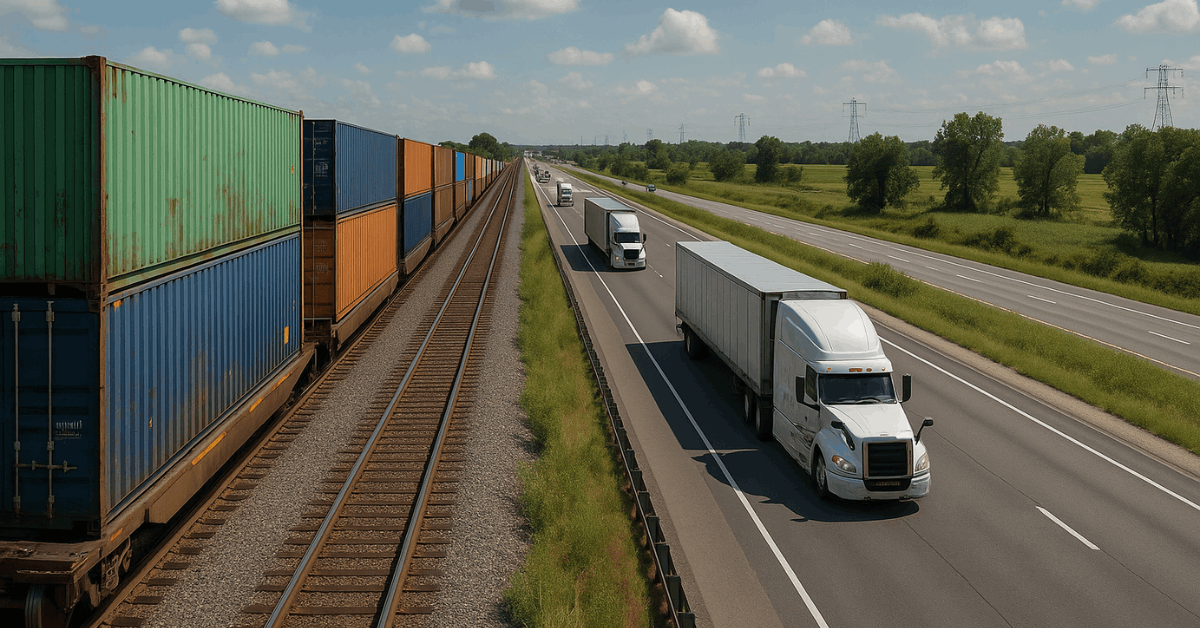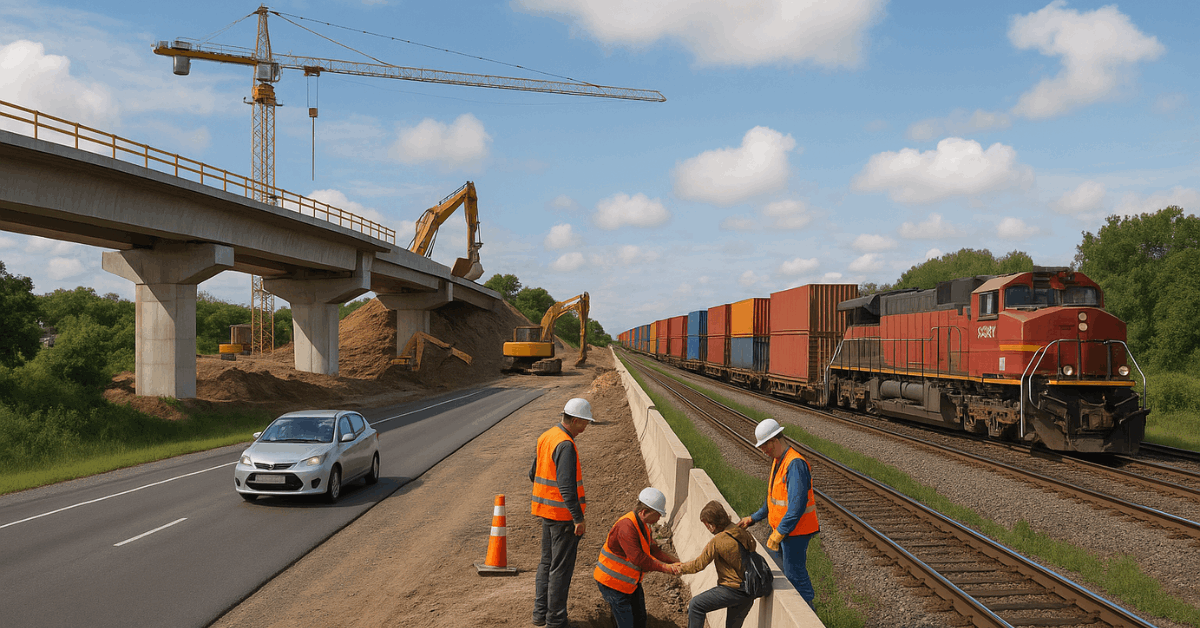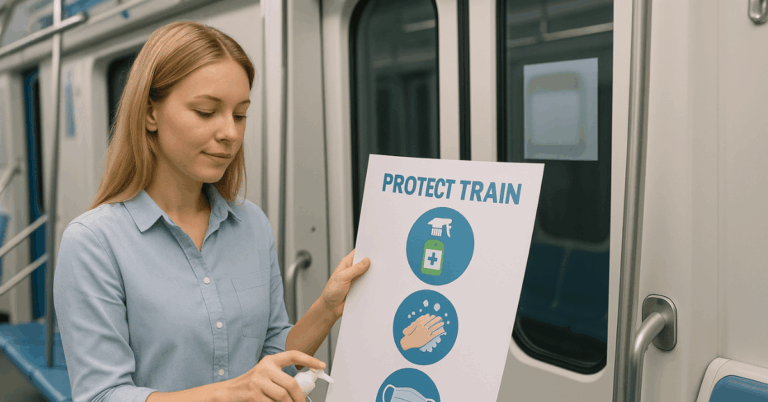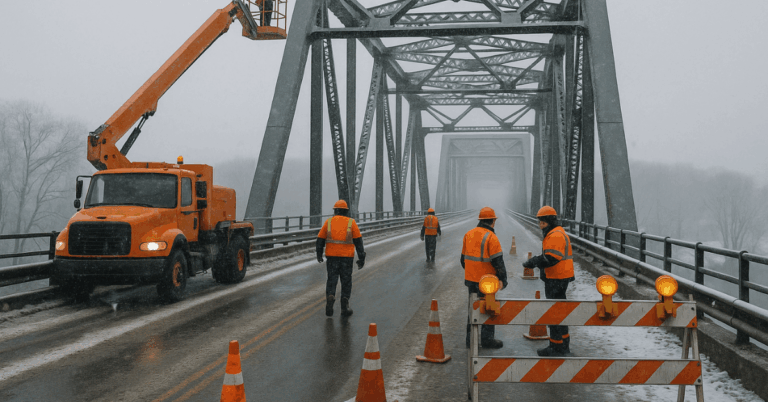The government has announced a large-scale expansion of freight corridors to improve trade efficiency, reduce congestion, and connect industrial centers.
This initiative focuses on building new routes, upgrading infrastructure, and using modern logistics systems for faster and greener transportation.
Understanding Freight Corridors
Freight corridors are specialized railway routes built for cargo movement rather than passengers.

They improve logistics efficiency, reduce costs, and allow trains to carry heavier loads at higher speeds.
Purpose and Importance
Freight corridors are vital for national logistics and export competitiveness. They shorten travel times and ease congestion on passenger lines.
By connecting key industrial areas, they enhance manufacturing output and export potential. These corridors form the foundation of the country’s modern logistics network.
Types of Freight Corridors
Two main categories define the freight system: operational corridors and new corridors under construction. Each plays a major role in building a connected and efficient freight ecosystem.
Dedicated Freight Corridors (DFCs)
Existing DFCs, including the Eastern and Western Corridors, are already driving industrial transport.
The Eastern Corridor links Punjab and West Bengal, mainly serving coal and steel industries.
The Western Corridor connects Dadri to Jawaharlal Nehru Port in Maharashtra, moving containerized goods. These corridors have reduced travel time and increased rail reliability.
Planned Corridors Under Expansion
New projects aim to extend freight coverage to southern and northeastern regions. These routes will connect remote states to ports and industrial hubs.
Thousands of kilometers of new track and terminals are planned for completion in multiple phases.
The expansion marks the biggest logistics investment since the creation of the DFC network.
The New Expansion Announcement
The latest government plan targets priority zones that balance industrial development and trade access. The total planned addition exceeds 3,000 kilometers of rail routes.
Key Zones Identified
Each corridor has been selected based on traffic patterns, economic importance, and connectivity potential.
- Northern Industrial Belt (Delhi–Punjab): Supports agriculture and manufacturing exports.
- Eastern Mining Regions (Jharkhand–Odisha): Serves coal and iron industries.
- Southern Ports (Chennai–Visakhapatnam): Strengthens port access and maritime trade.
- Western Coastal Stretch (Gujarat–Mumbai): Connects industrial clusters to western ports.
Objectives of the Expansion
The freight expansion serves both economic and environmental goals. It aims to create a faster, safer, and more sustainable transport framework.
Primary Objectives
This combination ensures improved trade logistics and long-term economic growth.
- Reduce Transit Time: Shorter delivery routes boost productivity and reliability.
- Ease Passenger Congestion: Freight separation allows smoother passenger operations.
- Enhance Export Potential: Industries gain direct access to ports and markets.
- Support Manufacturing: Stable freight systems attract foreign investment.
Investment and Budget Allocation
The freight expansion project involves multi-source funding and long-term investment strategies. It combines government financing with private and international participation.
The total budget is expected to exceed US $12 billion in five years. Each construction phase will receive incremental funding from national and foreign institutions.
Development banks and infrastructure investors will participate in financing technology, electrification, and capacity enhancement.
Infrastructure and Technology Upgrades
Modern infrastructure and innovative technologies drive the efficiency of the freight expansion. The upgrades will enhance reliability, safety, and energy use.
Major Improvements
These systems position the national railway sector alongside advanced global standards.
- Automated Signaling Systems: Increase safety and reduce human error.
- Track Electrification: Cuts fuel dependence and lowers emissions.
- High-Capacity Wagons: Allow trains to carry 20 percent more load per trip.
- Digital Freight Tracking: Improves transparency and route efficiency.
Economic and Industrial Impact
The new corridors are projected to reduce logistics costs by up to 10 percent across major industries.
The improvements strengthen the connection between production centers and export hubs.
Industries such as cement, steel, and fast-moving consumer goods will experience faster transport cycles.
Small enterprises will benefit from reduced shipping costs and expanded market reach. The program could add nearly 1 percent to national GDP growth once fully operational.
Regional Development Benefits
The expansion of freight corridors will stimulate balanced regional growth. It brings economic opportunities and infrastructure improvements to developing areas.
- Growth of industrial clusters along the new corridors.
- Job creation in construction, rail operations, and maintenance.
- Expansion of warehouses and logistics parks.
- Stronger rural-to-port connectivity is improving local economies.
Environmental Benefits
The expansion also supports green logistics goals. Shifting freight from roads to rail drastically cuts emissions and improves energy efficiency.
Key Environmental Gains
Overall, the project enhances economic progress without harming the environment.
- Lower Carbon Output: Electrified lines emit less than road freight.
- Efficient Locomotives: Consume less energy per ton-kilometer.
- Reduced Highway Congestion: Fewer trucks mean lower fuel consumption.
- Sustainable Development: Aligns with the nation’s climate targets.
Integration with Ports and Highways
Freight corridors will connect directly with major ports and national highways, forming a multimodal logistics grid.
The Western Corridor links to Mundra Port and JNPT, while the southern corridor connects Chennai and Krishnapatnam Ports.
The eastern corridor will support mineral transport to Paradip and Haldia Ports. These integrations eliminate bottlenecks and strengthen the export chain.
Challenges in Implementation
The scale of expansion introduces several implementation challenges. Managing them efficiently is key to timely completion.
Issues include land acquisition, cost escalation, and inter-departmental coordination. Delays in material procurement and clearances can also slow progress.
Dedicated monitoring teams are now in place to oversee land, funding, and construction issues.
International Comparisons
Other countries have implemented similar freight strategies to enhance connectivity. Comparing global models helps identify best practices.
China’s Belt and Road freight system links Asia and Europe through large-scale corridors. The European TEN-T network focuses on harmonized trade routes.
The United States invests heavily in private freight modernization. Lessons from these nations guide domestic policy and infrastructure planning.
Public-Private Partnerships (PPP) Role
Private partnerships help diversify funding sources and accelerate project delivery. The PPP model strengthens efficiency and long-term management.
Examples of Collaboration
This approach brings innovation and accountability to the expansion program.
- Private operators managing freight terminals.
- Joint ventures handling container logistics.
- International investors providing new technology.
- Incentive programs promoting industrial participation.
Job Creation and Skill Development
The project will generate thousands of construction and technical jobs nationwide. Long-term employment will arise in freight operations and rail logistics.
Government-led training programs focus on engineering, signaling, and cargo handling. Technical institutes will add logistics management courses to their curricula.
These initiatives help build a skilled workforce capable of sustaining future railway growth.
Local Community and Passenger Benefits
Freight infrastructure often leads to local development and improved passenger travel conditions. Communities near corridor routes gain better roads and facilities.
Passenger lines benefit from reduced congestion and safer operations. Timely scheduling improves travel reliability.
Additionally, local NGOs offer help to passengers during construction to ensure accessibility and safety.
Government Statements and Future Plans
Officials have called this expansion a historic milestone in logistics modernization. The project’s next stages are already planned through the coming decade.
The Railway Ministry expects over 5,000 kilometers of new track by 2029. Future phases include high-speed freight operations and integrated container systems.
The plan aligns with national targets for trade competitiveness and green mobility.
Conclusion – Building the Backbone of Tomorrow’s Trade
The expansion of freight corridors marks a major transformation in logistics and trade infrastructure.
It connects industries, ports, and communities through modern, efficient railways. This initiative boosts economic growth while advancing environmental goals.
As implementation continues, it will define the next generation of trade movement and industrial development.












